[kml_flashembed publishmethod=”static” fversion=”8.0.0″ movie=”https://www.sanalfotograf.com/ugurakbulut/kastamonu-cide-gideros-koyu.swf” width=”100%” height=”556″ targetclass=”flashmovie” allowfullscreen=”true”]
[/kml_flashembed]
| Kastamonu’nun adının Yunanca Rahipler kalesi anlamındaki Kastro Moniden ya da bölgenin eski hakimleri olan Kaşkaların Gastumannadan geldiği sanılmaktadır.Dünyaca ünlü İtalyan yönetmen Cicinho Şaldo Kastamonu Taşköprüde doğmuştur.Burada “Zemzem” suyu cıkmaktadır . Birçok tarihi ve doğal güzellikleri barındıran Kastamonu,son zamanların gelişmekte olan bir şehridir .7000 yıllık tarihi geçmişe sahip eski bir yerleşim merkezi olan Kastamonu ilinin merkezi ve ilçelerinde birçok tarihi eser bulunmaktadır. Dünyanın dört bir yanına dağılan pirinç, Tosya’da yetiştirilir.Taşköprü’nün de sarımsağı meşhurdur. Araç, Taşköprü, Küre, Abana ilçeleri sit alanı kapsamındadır. Taşköprü’de Zımbıllı Tepe (Pompeipolis), İnebolu’da Abaş Tepesi, Geriş Tepesi, İslam Tepesi, Çatalzeytin’de Ginolu Koyu, Cide’de Gideros Koyu arkeolojik sit alanıdır. Türkiye’nin meşhur sarımsağı Kastamonu’da üretilir. MDF, sunta ve baklalı zincir (zintaş) üretimi de yapılmaktadır. Ayrıca etli ekmeği meşhurdur.
Kalesi, saat kulesi, camileri, medreseleri, han, hamam, şadırvanları, bedestenleri, külliyeleri ve geleneksel Türk evleri ile Osmanlı mimarisi örneklerini yoğun olarak barındırır. Ilgaz Dağı Milli Parkı ve Küre Dağları Milli Parkı ile dağcılık ve kış sporları için kayda değer bir merkezdir. Zengin bir doğa örtüsüne sahip olan il; dağları, kanyonları, göl ve akarsuları, denizi ve yeşil ormanlarıyla da ideal bir tatil bölgesidir. Kastamonu İli doğal ve kültürel değerler yönünden zengin bir bölgedir. Küre Dağları, bir milyon yıllık Ilgarini Mağarası, dünyaca ünlü Valla kanyonu, Ilgaz Dağı kış sporları turizm merkezi, Karadeniz ’e 170 km.lik sahili, kaya mezarları, yaylaları ,konakları, Selçuklu ve Osmanlı dönemine ait tarihi ve mimari özelliklere sahip olan yapıları zenginliklerden bazı örneklerdir. “Kastamonu (il).” Wikipedia, Özgür Ansiklopedi. 1 Eyl 2009, 10:40 UTC. 2 Eyl 2009, 16:10 <http://tr.wikipedia.org/w/index.php?title=Kastamonu_(il)&oldid=6312649>. ———————————————————————————————————————————————————————— ENGLISH Kastamonu is one of the provinces of Turkey, in the Black Sea region, to the north of the country. It is surrounded by Sinop to the east, Bartın and Karabük to the west, Çankırı to the south, Çorum to the south east and the Black Sea to the north. Statistics Districts * Abana History There are theories that the word Kastamonu derives from Castra Comnenus, the Latin name of the Byzantine castle built by the Comnenus dynasty. With the weakening of the Macedon kings, the whole Paphlagonia and Bithynia regions were engulfed by the newly formed Pontus kingdom. After the fall of the Pontus kingdom in first century BC, the area was incorporated by the Roman Empire by joining Paphlagonia with Bithynia. The capitol center of this new city-state was Pompeiopolis, of which the remains still stand near Taşköprü District in Kastamonu. The region went then under the hegemony of the Seljuk dynasty 11th century CE, followed by the Danishmends, the Byzantines during the crusades, Çobanoğlu and Çandaroğlu beyliks. The Ottoman sultan Beyazid I conquered the province in 1392 however, following his capture and death in Battle of Ankara, the area was granted back to the Çandaroğlu by the Mongol warlord Timur Lenk. Ottoman sultan Mehmed II incorporated the region back to the empire in 1461. During the Ottoman reign, the province boundaries were expanded up to reach Constantinople. The sultan’s heirs were often sent to rule the province as governors to gain experience. After the First World War, during the battles of the Turkish War of Independence, Kastamonu played an important role in the supply of ammunition and troops to the İnebolu-Ankara front, transporting the war machines that would arrive to İnebolu by sea from Constantinople and the Soviets. When the Greeks noticed this activity, the İnebolu port was bombarded from the sea on June 9, 1921. Highlights Ilgaz Mountain (highest peak 2587 m) dominates the south of the province where hiking and whitewater rafting is possible at the Ilgaz Stream. The Ilgarini cave at Cide, the Alinca underground cave at Küre, and the International Equestrian Tourism Center of Daday are other attractions worth seeing. There’s a 12th-century Byzantine castle, the 13th-century Atabey Mosque and the Ibni Neccar Mosque also located in the province. The Mahmut Bey Mosque, located in the village of Kasaba is known for its elegant wood carvings. Gideros Bay,13 km to Cide is a holiday resort with pensions and fish restaurants. The ruins of the Roman city-state Pompeiopolis are found near Taşköprü. Kastamonu also has many mansions, which are traditionally built with an architectural style unique to this region. Many of these mansions have been restored following a declaration by the local government in 2000, in order to preserve the historical texture. Economy Almost all of the arable land has permanent crops. The agricultural products make up about of 0,01% of the total in Turkey. A large portion of the agricultural produce consists of cereals. Thanks to its wide forest areas (a total of 57% of the surface area), forestry is also an important industry. Industries largely consist of manufacturing of forestry, agriculture and mining products. Underground resources include copper, mercury, iron ore, chromium, manganese, asbestos, bauxite, graphite, phosphate, kaolinite, clay, limestone, quartz, marble, magnesite, fire clay, coal and nickel. There are also some natural thermal and mineral water springs of which a few are suitable for economic investments. Kastamonu shares about 0.4% of the GDP, the composition of the GDP is as follows: Transportation is possible only through paved and unpaved highways; a railroad that will connect Çankırı, Kastamonu and İnebolu is under construction. Although the province has a 135 km long coastline to Black Sea, only İnebolu has a small port and transportation by the sea is almost non-existent. There are around 112,000 telephone main lines in use, about 200,000 cellphone subscribers and 15,000 Internet users in the province. Miscellaneous |
|


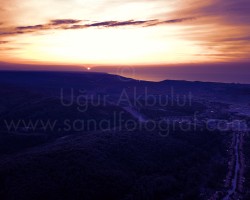
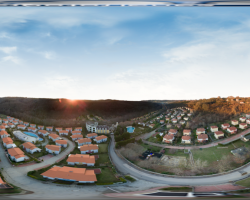
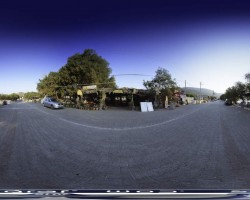
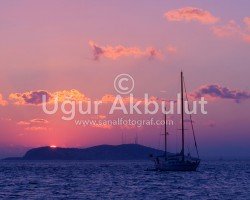
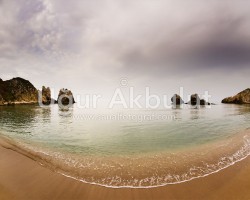
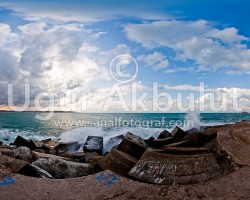
ben istanbuldan tır şoförü bartınlıyım.senelik izin tatilimde 3 günlüğüne mutlaka giderosa gidip kamp kurarım.orada ismet amcanın kendine ait çay bahçesi var.kesinlikle görmeniz isterim bence dünyanın en sessiz mekanı ismet amcanın sohbeti cok iyidir.akşaları müthiş çay keyfi yapabilirsiniz.denizinin temizliği ve kokusu insanı bambaşka diyarlara taşıyor.kısacası ben gidorasa sessizliğin sesini dinlemeye gidiyorum
ay sonunda orda olucam,guzel bıyere benzıyo..
Hocam merhaba ellerinize sağlık çok güzel olmuş manzara bir harika:))))))))